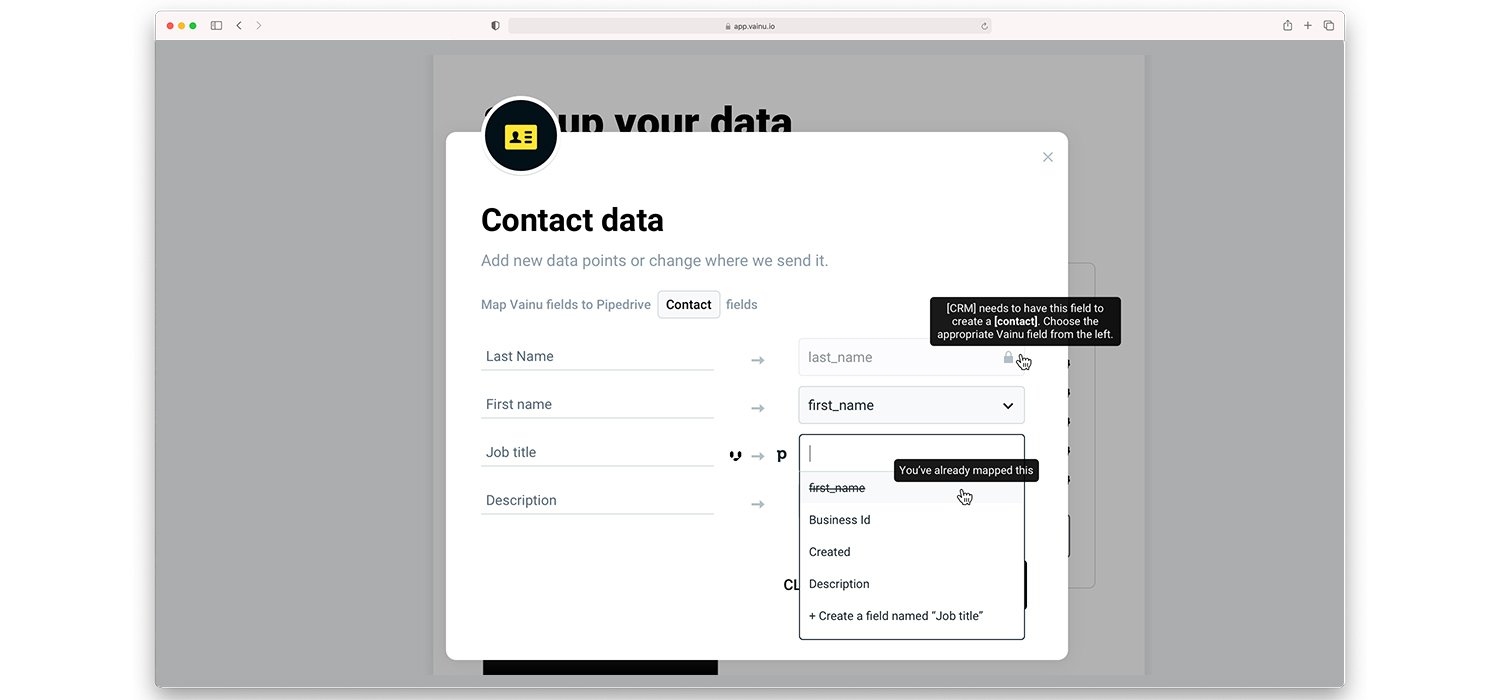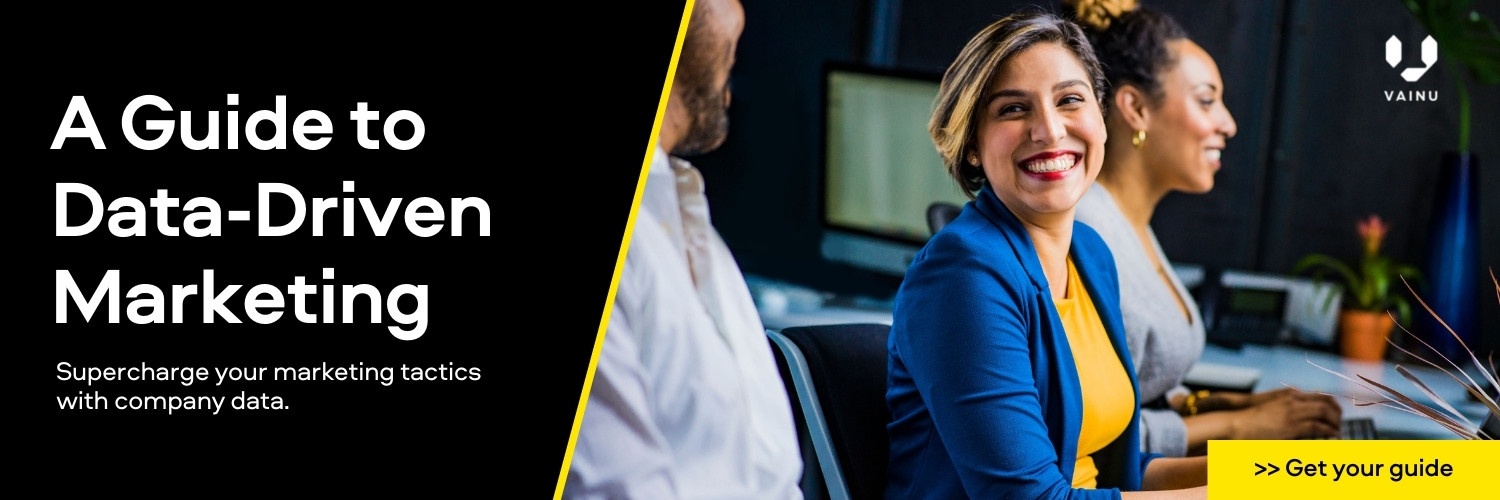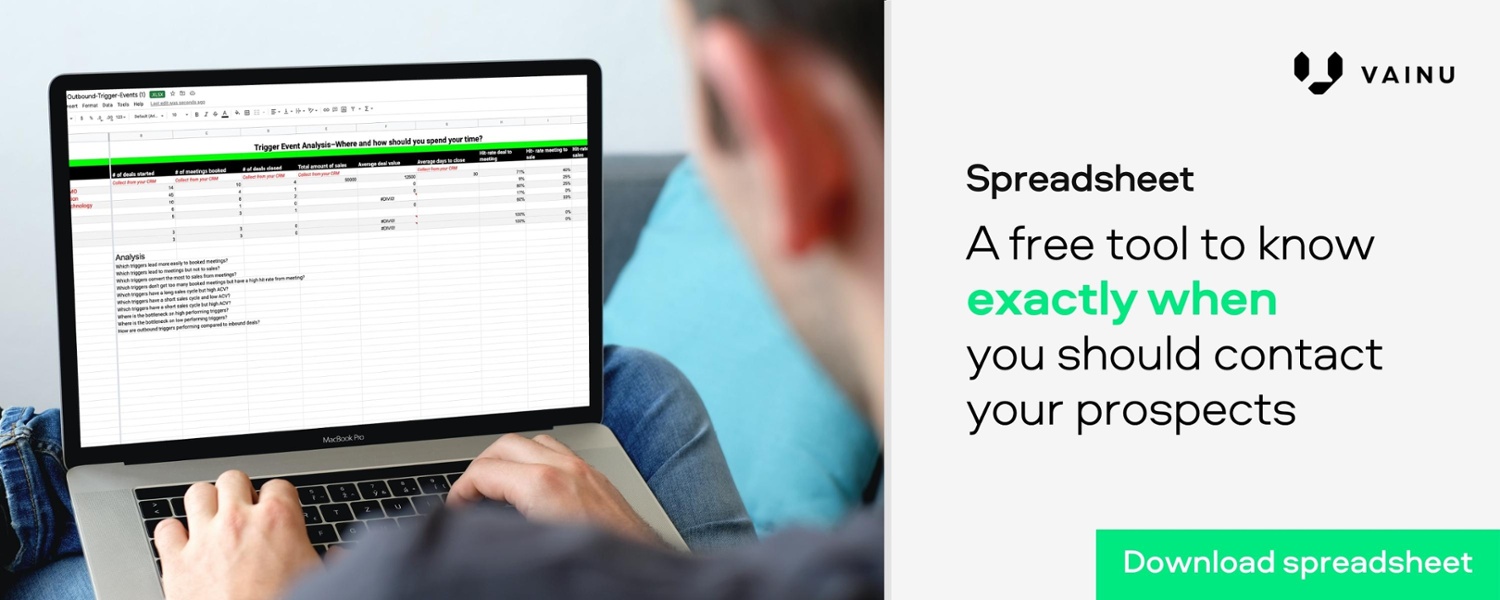How To Use Company Information To Create Targeted Ads That Convert
Nobody likes ads. And yet, we’ve never seen—and created— as many ads as we do today. If nothing else, the internet gave us the omnipresence of targeted ads.
Technology made it possible to create ads so personal and hyper-targeted that we tend to believe our devices listen to us at all times. The truth is algorithms know us better than we know ourselves. They’ve learned from the websites we visit, the articles we read, the people we follow, the products we purchase. All that data combined drives the ads we see in our social feeds every day.
In business-to-business, a similar experience is not that simple. For starters, in B2B there isn’t a single individual buyer. What a person reads, sees, or does in your website and social channels is only one piece of the puzzle. Behind every employee, there’s a company with its own challenges, needs, and decision-making processes.
If you want to create relevant ads that covert in B2B, you need a deep understanding of the companies you’re targeting. Such knowledge must go beyond basic characteristics such as location or size. To be genuinely targeted and maximize the ROI of your ads, you need to dive neck-deep into data.
In this article, we go through three practical ways to use real-time company information to create better, more targeted ads that convert. Let’s get into it.
How to improve your targeted ads with company information
Contrary to their B2C counterparts, B2B marketers don’t hold a lifetime of browsing history that informs their advertising efforts. This doesn’t mean they can’t take a data-driven approach, though. After all, there’s plenty of company information to be found on the internet. By using real-time company information, B2B marketers can focus their efforts, including advertising, on the companies most likely to convert.
Contrary to their B2C counterparts, B2B marketers don’t hold a lifetime of browsing history that informs their advertising efforts. This doesn’t mean they can’t take a data-driven approach, though.
Pull the data points you need
Before you kick off your targeted advertising campaigns, you’ll need all the relevant information to identify your target accounts. Use company information to build rich profiles on the companies in your database. Your primary data points should match the attributes of your ideal customer profile.
These data points can be firmographics, technographics, intent data:
- Firmographics company size, location, number of employees, revenue, etc.
- Technographics a company’s technology stack: marketing automation, e-commerce platform, website technologies, etc.
- Intent data blog read, web pages visited, email opened, eBooks downloaded, etc.
Chances are those data points are all scattered around your different sales and marketing systems and databases. For example, a marketing automation platform does a good job tracking and storing intent data, but it probably lacks key data points like industry and size—especially if you want to keep your web forms short to increase conversion. Consider establishing a lead enrichment process to feed additional data points into your database.
Through software integration and the use of different APIs, you can have the data flow from one system to another. Does this sound too geeky? Don’t fret. In practice, this just means that the same data should populate all the contact fields across all your databases.

Use the data to build target lists
With your data foundation ready, now, it's time to get those targeted ads running. Remember, the idea is to identify very niche groups to deliver extremely relevant ads. Therefore, the first step is to build your target lists. Who do you want to see your ads? That's the (obvious) question you'll answer at this stage. Your ideal customer profile is always the best starting point to build target lists.
Let's say you're selling to all e-commerce stores in the Nordics with more than ten million euros of revenue. Next, find all the companies matching this description.
The easiest way to find all those companies is to use a sales intelligence platform, for example, Vainu. A straightforward search in the database will give you a list of companies to target.
Who do you want to see your ads? That's the (obvious) question you'll answer at this stage. Your ideal customer profile is always the best starting point to build target lists.
Is the list too extensive? Use additional attributes to narrow down your results. Create smaller clusters of companies: companies with more than 100 employees, companies that use a specific technology, etc.
The next step is to upload those lists to an ad platform, for example, LinkedIn Campaign Manager, and target the relevant employees with your ads. This may be the marketing department or the CFO.
With this approach, you'll have highly focused lists full of ideal accounts to target. Instead of spending a big chunk of your budget displaying ads to a broad group of people, you'll concentrate your ad spend on the accounts that matter. More efficiency, less waste.
Next, it's time to personalize the messaging in your ads.
Create targeted ads with more persuasive and relevant copy
In the world of digital advertising, small changes can trigger massive improvements in your ad response rates. When you’re paying tens of dollars for a single click, you must write ad copy that not only can push and persuade people, but it’s also relevant. Relevancy can make all the difference between being impactful or becoming just plain annoying.
The same company information you used to build target lists can provide the insights you need to develop a complete profile on your prospects and customers. Look into key data points to create different sets of ads that you can serve according to the particular situation of a company or a group of companies. Know a company’s relocating? Create ads that highlight how you helped companies in a similar position before.
The more you know about your prospects and customers, the more your targeted ads will resonate with them. Your conversion rates will increase without alienating your audience with irrelevant ads.
Trigger advertising at the right time
Finally, stay on top of your audience. The most seducing ad copy will be worth little if a company is not ready to buy. A high conversion rate is directly linked to perfect timing, to that precise moment when a window of opportunity opens up. Untimely advertising, on the contrary, results in lots of wasted ad money.
One way to monitor your target accounts is to create automated workflows based on trigger events. This way, you can launch your targeted ads when a significant change happens. A company expands to a new market? That's an excellent moment to trigger advertising. Such a company will likely be looking for services and products to help those expansion efforts.
Bonus tip: To choose the right trigger events, look at your happiest customers. What happened before they sign with you?
With real-time company information feeding into your sales and marketing databases, you'll get notified whenever a significant change happens in your target lists. Additionally, with the right setup and integrations in place, your targeted advertising campaigns will run automatically as soon as such change occurs.
Beyond targeted ads
Once you've learned to create targeted ads in a systematic, data-driven way, you'll have a strong weapon in your arsenal to succeed with complex, hyper-personalized strategies like account-based marketing. For example, your target lists will likely be the same.
If you're itching to get started with account-based marketing, we recommend reading this guide that explains all the necessary steps to get started with ABM.

